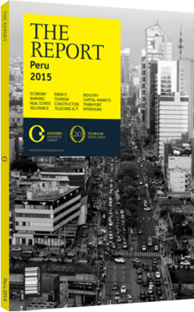José Chlimper, CEO, Agrokasa: Interview

Interview: José Chlimper
To what extent are government interventions effective at boosting productivity and competitiveness?
JOSÉ CHLIMPER: Government interventions have not always achieved their goals. In the past, for example, there were indiscriminate subsidies for cotton production, without requiring any minimum productivity levels. Even today there is a mandated price range for yellow field corn and a legal impediment to using more advanced seeds, which impacts hundreds of thousands of farmers. Subsidies are effectively acting as a pain reliever while failing to address the underlying issue of productivity, which must be the government’s main focus and responsibility. In sectors that operate rationally without subsidies, the taxes paid during the production process are reimbursed when goods are exported. This method is having the desired effect of creating a more productive and competitive industry that will help Peru achieve its potential as an agribusiness power.
How has microfinance helped to address poverty?
CHLIMPER: Financial institutions try and avoid taking unnecessary risks. While some businesses have understood the need to remain competitive, others are dependent on subsidies and have the government as their sole buyer. Therefore, the penetration of micro-finance in the rural sector, which has increased significantly in the past few years, has acted as a catalyst for finance to influence the rural community, converting small farmers into agricultural entrepreneurs.
The agricultural sector currently absorbs 26% of all labour. Is formalisation among farmers increasing?
CHLIMPER: The best formalising tool is the market. Agricultural producers are recognising that it is much more beneficial to focus on the growing foreign market of 2bn emerging middle-class consumers, a number that is constantly growing in line with the number of free trade agreements, rather than sticking with the small, saturated domestic market. As for the role played by the government, its influence has remained limited other than some small-scale projects. The formalisation of the industry depends more on increased demand in the market, a focus on exports and access to financial mechanisms that can support an agribusiness industry so it can compete globally.
Does dependence on Jorge Chávez International Airport affect the competitiveness of agribusiness?
CHLIMPER: Although most agribusiness exports are conducted via seaports, there is also an air freight focus on some fresh goods such as blueberries and asparagus. At the same time, there is a problem with Jorge Chávez International Airport, due to its size, costs and the daily flight frequency it is able to manage. This has created a bottleneck for businesses that are 100% reliant on airborne transport, such as strawberries or flowers. The expansion of airport infrastructure will help to take some pressure away from the capital and diminish logistics costs, not only in Lima but also in the provinces. With the tenders already awarded and those further down the pipeline, the sector has the capacity to fulfil its potential in the medium term.
What is being done to upgrade the irrigation system and ensure sustainable water management?
CHLIMPER: Since the new General Law of Hydro Resources was approved in 2011, government programmes such as the Sub-regional Programme for Irrigation, as well as private initiatives including Sierra Productiva, have promoted the gradual integration of technology into the workings of the irrigation system.
Moreover, NGOs such as Pachamama Raymi can increase awareness about the importance of using water resources sustainably. The most effective publicity for the system is success stories illustrating the benefits of the increased productivity that can result from mechanised irrigation. Alongside improved logistics and higher penetration rates from micro-loans, this will create a virtuous circle with a direct effect on how the agro-export industry will continue to grow.
You have reached the limit of premium articles you can view for free.
Choose from the options below to purchase print or digital editions of our Reports. You can also purchase a website subscription giving you unlimited access to all of our Reports online for 12 months.
If you have already purchased this Report or have a website subscription, please login to continue.

